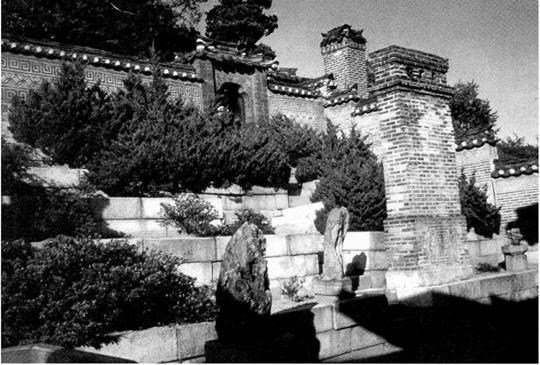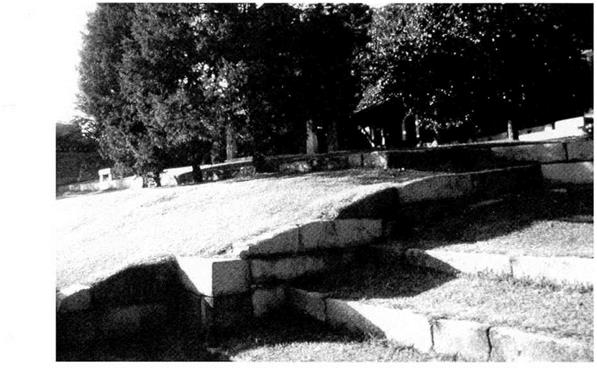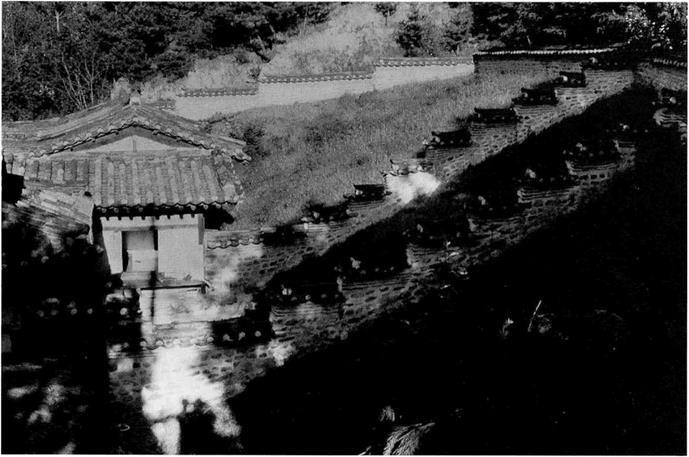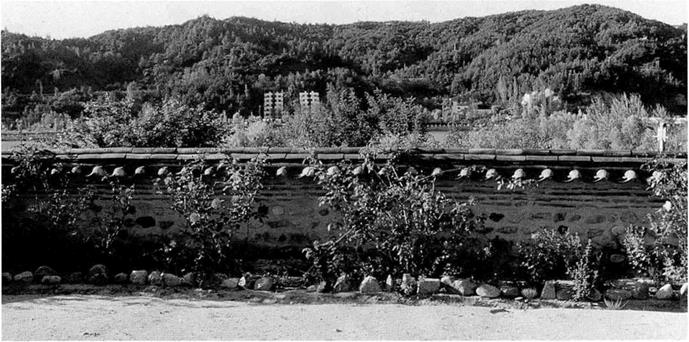The area of open ground on the slope behind and north of the anch’ae is called the twitmadang, or the rear garden. It is sometimes located at the top of a series of stepped terraces.
The significance of this rear garden lies in its role as an exterior space for the leisure activities of the women and children of the household, who traditionally lived in the anch’ae and were forbidden to leave the residential compound without good reason. It was a very private space, which men—particularly men from outside the household—were not permitted to enter.
In contrast to the inner gardens, which are essentially bare of vegetation, the twitmadang may contain grass, shrubs, flowering trees, and fruit trees. In a corner is sometimes a large ornamental stone, and it is not unusual for a pavilion to be built in very spacious rear gardens. In many cases, though, the rear garden is no more than an area of open grass with a cluster of unruly trees. Since prospect is the chief objective in planning, the garden itself is not thought to require any particular attention (Figures 113.1-113.4).
Thus, the rear garden is part of the family’s living space, closely linked with the anch’ae, in this sense its raison d’etre is completely different from that of a Chinese ting yuan or yuanlin. If a garden is defined as a place to be viewed and
admired by owner and guests, a twitmadang does not qualify as a true garden.
There are two ancient palaces in Seoul—Kyongbokkung and Ch’angdokkung—both of which are great royal palaces preserving something of the glory of Choson Korea amid the rush and bustle of the modern capital. During the Choson period, however, Kyongbokkung was the seat of government, where visitors were granted audience or entertained, while Ch’angdokkung was home to the royal family. One particular feature of Ch’angdokkung is the huge Piwon (Secret Garden), which sprawls over 27,000 square meters (6.66 acres) behind the palace buildings.
The Secret Garden was the rear garden of Ch’angdokkung, and it played the same role in the Imperial residence as did the twitmadang of any yangban estate. Just as the women and children who lived in the anch’ae of a yangban mansion were able to stroll around their walled rear garden, so too were the queen, princesses, and young princes able to enjoy the private, open space of the Secret Garden behind their palace home. Piwon spreads out over a gentle slope and contains many trees—102 different species in all. Quarried-stone-lined ponds, halls, and pavilions are scattered strategically around the garden, belvederes are set amid lawns, and paths run through the woods linking these features one to another. Piwon is submerged in nature. The importance of prospect and borrowed scenery in the composition of the buildings applies here just as much as it does in other gardens (Figures 114.1-114.3).
The twitmadang of a yangban estate and the huge parklike grounds of the royal palace were essentially the same kind of space, rooted in the same traditions. Piwon was a very private place; it was never used for entertaining visitors from outside the royal family.
|
|
|
111.1 Ground plan and section schematics showing the location and structure of buildings on the site composed to afford optimal views. |
|
111.2 A view showing the relationship between atich’ae and the twitmadang. |
|
|
|
|
|

|
|
|
|
|
|
|
|
|
|
|
|
|
|
|
|
|
|
|
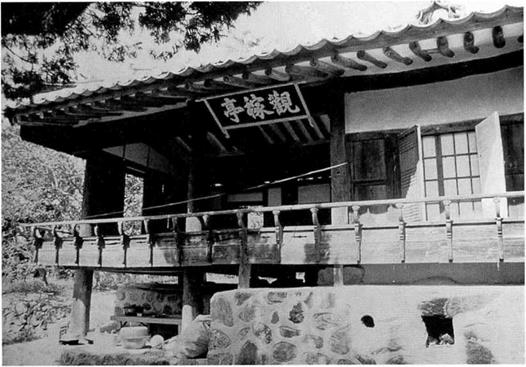
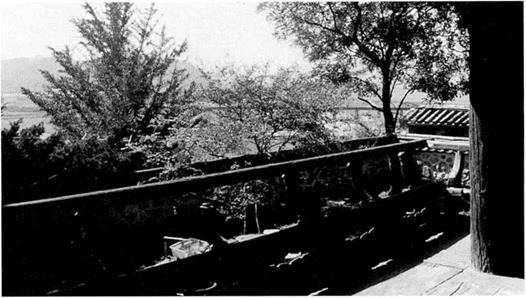
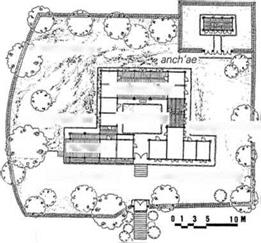
|
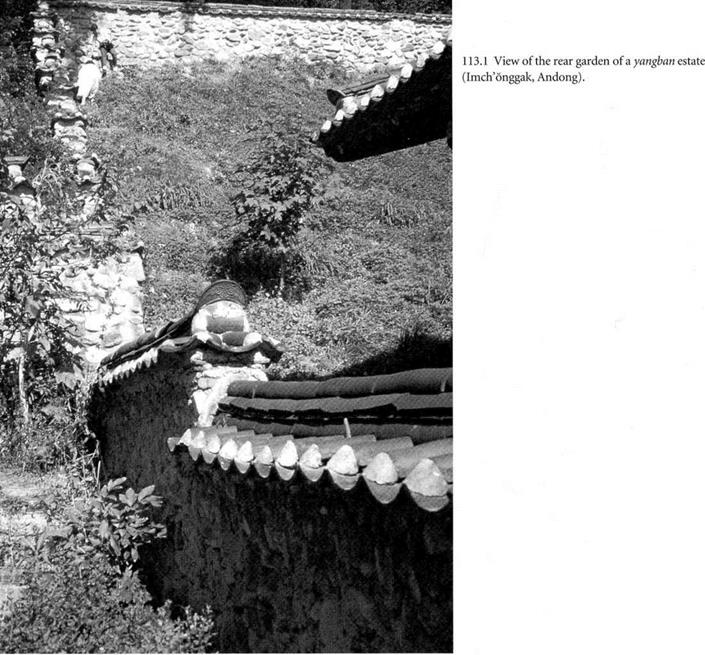
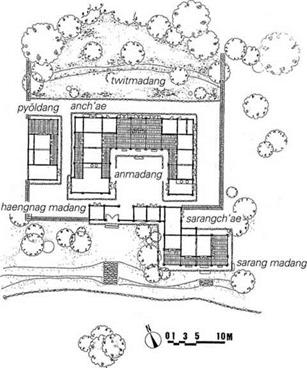
|
|
|
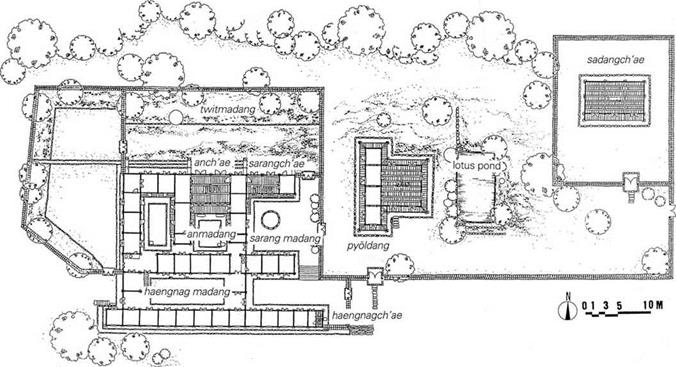
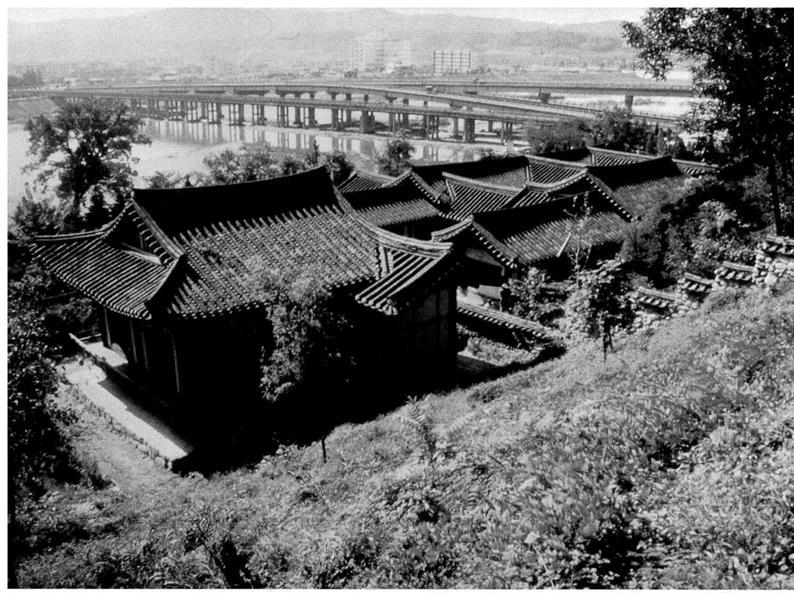
|
|
|
|
|
